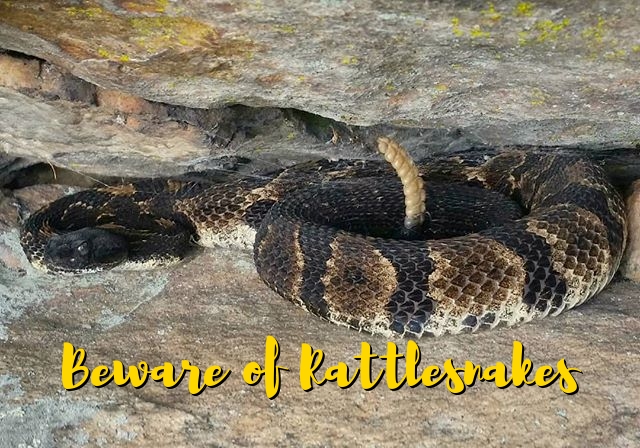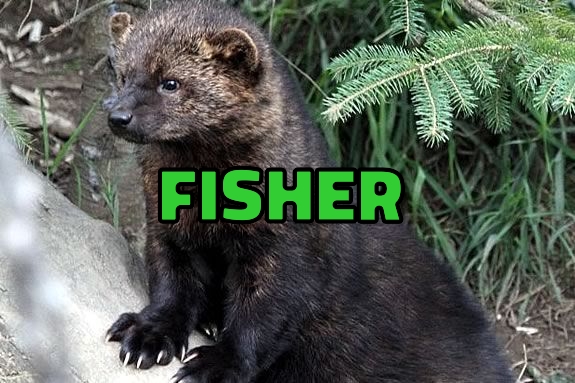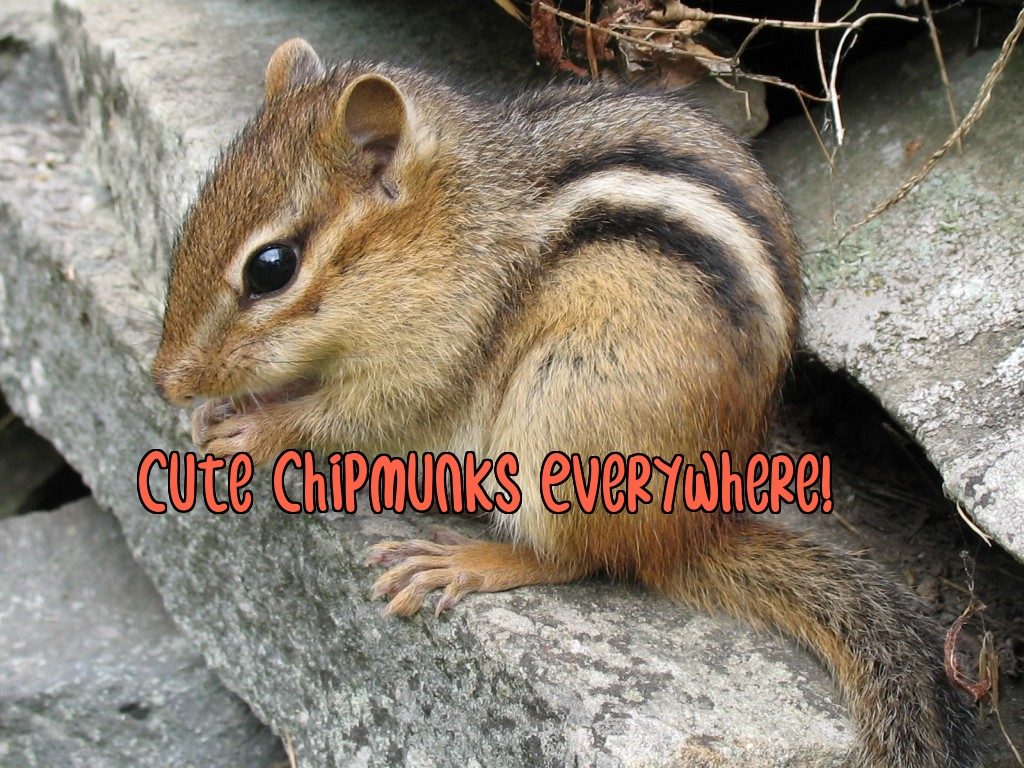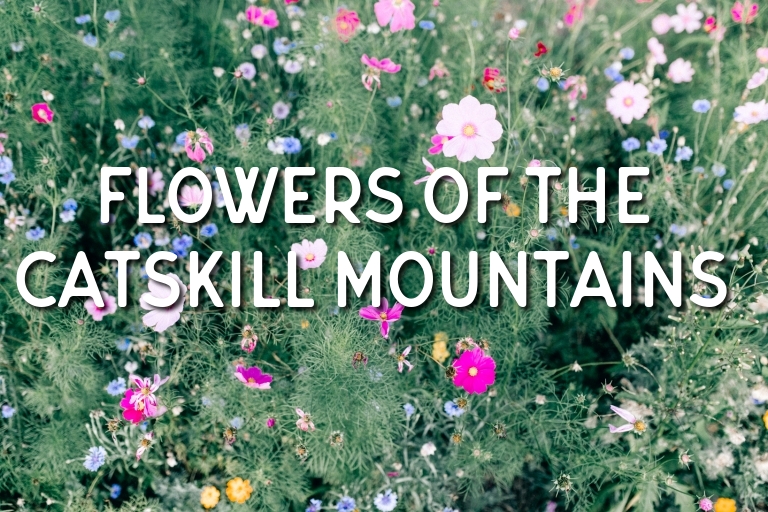The Catskill Mountains are a nature-lover’s paradise. The weather is perfect for a wide array of flora and fauna that is unmatched anywhere else. If you’re planning on hiking during your visit to the Catskills, you’ll want to make sure to beware of your surroundings. Mother Nature can be a beautiful thing, but wild animals also pose their own threat out in their habitat. Some animals you may spot while you’re out and about in the mountains are listed below.

Snakes
There is a big possibility that you will encounter a snake or two during a hiking excursion in the Catskill Mountains. There are mainly 2 poisonous ones to really watch out for and those are the copperhead and the timber rattlesnake. They will usually be colored black, tan, and yellow and have a triangular head shape and, of course, the rattle tail. If you see (or hear) one of these nearby you will want to make sure to step away slowly. Don’t make any sudden movements that the snake may mistake for aggression. These snakes can live for up to 30 years and grow as long as 4 feet.
Coyotes
You may hear the howls of coyotes if you listen hard enough. There are a plethora of coyotes in the Catskill Mountains and surrounding regions. They do tend to stick to the mountains and valleys, but have been seen elsewhere, too. Staying in the mountains allows them to chase their prey (rabbits mainly) to the ledge of the mountain, where they cannot escape. Coyotes are known to be intelligent animals and can grow to anywhere from 40 to 65 pounds.

Fishers
These creatures were almost wiped out in the early 1900s. They were hunted for their fur, but now they’re back up to a healthy population. You can think of them as cat-sized weasels. They’re usually a chocolate-brown to black color and have long tails. They generally stay in the forest and are pretty elusive and hard to spot. They can range anywhere from 4 to 16 pounds and grow up to 40 inches in length, from head to tail. They are opportunistic hunters and search for easy meals, but usually dine on rabbits, voles, squirrels, nuts and seeds. They are very aggressive and have very few predators.
Black Bears
These cute critters are abundant in the Catskills, too. While they may look adorable from far away, these animals are NOT to be approached. The male black bear can reach upwards to 750 pounds and are nothing to play around with. They are omnivores, meaning they eat meat and vegetation. They tend to stay in the dense forests of the mountains, but should you see one, stay far away. You should also avoid walking into dens and caves in the area of the Catskills as the black bears hibernate, often with their cubs, during the winter time.
Big Cats
Bobcats and cougars are common up in the Catskill Mountains. They roam freely, tracking down their prey of birds, rodents, and sometimes even deer. Bobcat tracks are easy to spot and tend to hide out in caves and the various rock ledges around the mountains. Cougars, which are also often referred to as mountain lions and panthers, are larger than the bobcat. They mainly feed on deer and sometimes raccoons and rabbits. They won’t waste their time with mice or small birds. If you do spot a big cat while you’re out and about in the Catskills, chances are it’d be a bobcat. There’s still a bit of a debate if there are cougars out in that area.
White-Tailed Deer
These majestic animals are usually seen in herds, usually before dawn, munching on the cool, wet grass, nuts and seeds. Deer are not known to be hostile, unless they’re cornered. Most deep will run away if encountered by a person. Their main predators for deer out in the Catskills are the coyotes and the big cats. If you want to see some baby deer, or fawns, when you visit, deer breeding season is usually November to December, with a 7 month gestation period, so expect baby deer around May or June.

Chipmunks
These cute and cuddly squirrels are found all throughout the mountains of New York. You can see them scampering around on the trees in the forest or foraging for fruit, mushrooms, nuts, and seeds. They’re not aggressive, tend to run from people, but will get territorial if they feel their nest or home is being threatened.
There are also many beautiful flowers to see when you’re up in the Catskill Mountains. There are different ones that bloom at different times of the year, so if you are a plant enthusiast, you’ll want to research the specific region you’re planning on traveling to beforehand, so you can know what plants will be in season during your visit:

Dutchman’s Breeches, Starflowers, White Violets, Trout Lilies, Red and Painted Trillium, Eastern Red Columbine, Fringed Polygala, Ragged Robin, Mountain Laurel, Pinxter, Viper’s Bugloss, Orange Hawkweed, etc. This is just to name a few. The plants out in the Catskills are beautiful and abundant in variety.
One thing is for sure when going to the Catskill Mountains, you have to make sure to remember and pack the camera before you head out. After you get done touring all the attractions and restaurants in and around the Catskills, you will definitely want to capture all the beauty and wildlife around you. Even if it’s just to get the a photo of the landscape and mountains that will be surrounding you, a river, or a newborn fawn, you will be encountering sights that you will want to capture and remember for a lifetime. Traveling to the Catskills can be a real adventure and it’s important to know what to expect. While you may go and not see any of the wildlife mentioned above, it’s good to have an idea of what animals you may come across and what to do if you do encounter one of the Catskills furry or scaly natives. Now’s a good time to start planning a trip to the Catskills.